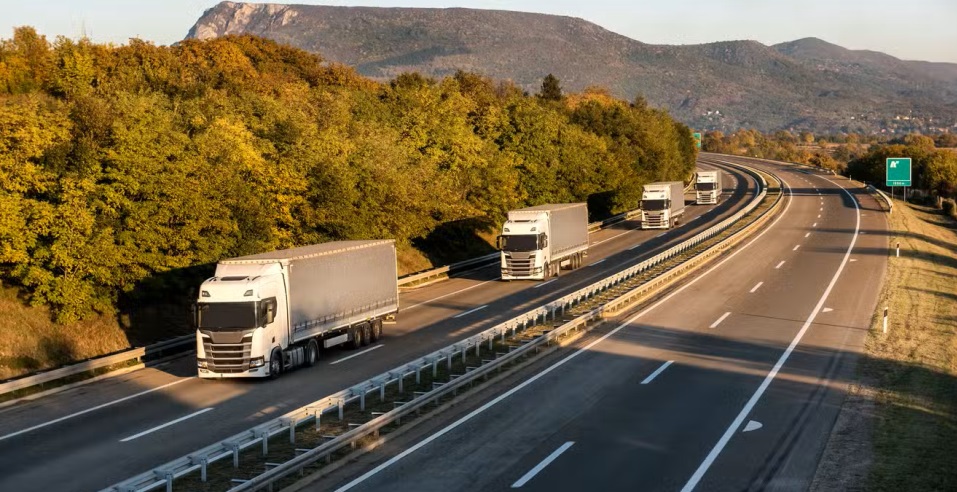On April 10, Members of the European Parliament approved a law that will require nearly all new trucks sold in 2040 to be zero-emission.
Specifically, it was agreed that manufacturers will have to reduce average emissions by 45 per cent by 2030, 65 per cent by 2035, and 90 per cent by 2040.

In this regard, Sita Holtslag, Europe Director at CALSTART, comments: “This is significant regulation because Europe is home to most of the major truck manufacturers who sell their vehicles globally.”
“Indeed, whatever happens will have a global impact,” she adds.
However, she acknowledges that “the standards could have been more ambitious”.
“I recognize that this transition is happening rapidly and commitment is necessary. It’s really about ensuring that implementation is accelerated,” Holtslag states.
In this sense, the director mentions the Netherlands’ initiative as a success story.
This country is hastening the adoption of eTrucks through the AanZET subsidy, which opened on March 26, offering up to 115,200 euros per unit.
The program targets entrepreneurs and non-profit organizations wishing to purchase or finance the lease of a new and fully emission-free truck.
Subsequently, they propose as a second step, preparing a respective electronic deposit for charging infrastructure and the supply of renewable energy.
For hauliers, the MIA/Vamil subsidy provides a 45 percent reduction in fiscal investment and a 75 percent depreciation on the cost, which can lead to a net saving of 14 percent of expenditure.
Regarding the possibility of almost all new units being electric by 2040, Sita Holtslag states: “It is definitely feasible. I consider it even a bit late for Europe, as the technology is ready.”
“It would be possible for all new sales to be zero-emission by 2035 in Europe if countries implement the right policies“, she adds.
In other words, what is needed is a robust regulatory framework and coordination to ensure that the necessary grid capacity is available to deploy charging infrastructure.
It is also essential to ensure that permits and essential processes are fast enough, as well as to guarantee access to financing since the initial cost of an electric vehicle and its infrastructure is high.
Additionally, there must be a residual value guarantee fund or other forms of risk mitigation and access to grants to facilitate the transition for businesses.
All these measures are necessary to promote the transition to electromobility, which will enable the European Union countries to meet the objectives of the European Green Deal, committing to climate neutrality by 2050.
The truth is that, after cars, heavy vehicles constitute the most polluting mode of transportation in Europe.
Therefore, this law agreed upon in negotiations between Members of the European Parliament and governments, would help European electric truck manufacturers compete with foreign ones, thereby reducing annual CO2 emissions from heavy vehicles by 62 percent by 2050 (compared to 1990).
Read more: New regulations for eTrucks elicit mixed opinions: What is the eMobility sector’s stance?
What is CALSTART’s role in Europe?

CALSTART’s Drive to Zero program and campaign and the Government of the Netherlands co-lead the Global Memorandum of Understanding (MOU) on Zero-Emission Medium- and Heavy-Duty Vehicles.
Currently signed by 33 countries, the memorandum sets a target of 30 percent of new medium- and heavy-duty vehicle sales being zero-emission by 2030, and 100 percent by 2040.
Specifically, of the nations involved in the project, only ten are members of the European Union (EU): Austria, Belgium, Croatia, Denmark, Finland, Ireland, Lithuania, Luxembourg, the Netherlands, and Portugal.
Furthermore, outside the EU but within Europe, Iceland, Liechtenstein, Norway, Scotland, Switzerland, Turkey, Ukraine, the United Kingdom, and Wales are also cooperating.
However, Holtslag emphasizes that to achieve this, “regulations by countries are needed to ensure there are enough EVs in the market.”
In this regard, CALSTART supports and drafts letters informing EU decision-makers about ambitious policies’ benefits.
Additionally, the association identifies that one of the core issues on which nations are interested in working is the assessment and mapping of infrastructure needs for HDEVs.
In this context, to assist, the firm establishes contacts with infrastructure providers and those with expertise on the subject to promote the execution of such plans.
Likewise, it provides access to the Zero-Emission Technology Inventory (ZETI) of the Drive to Zero program, a global database of zero-emission technology inventory.
This tool also tracks policies, incentives, and government tax benefits linked to the sector.








